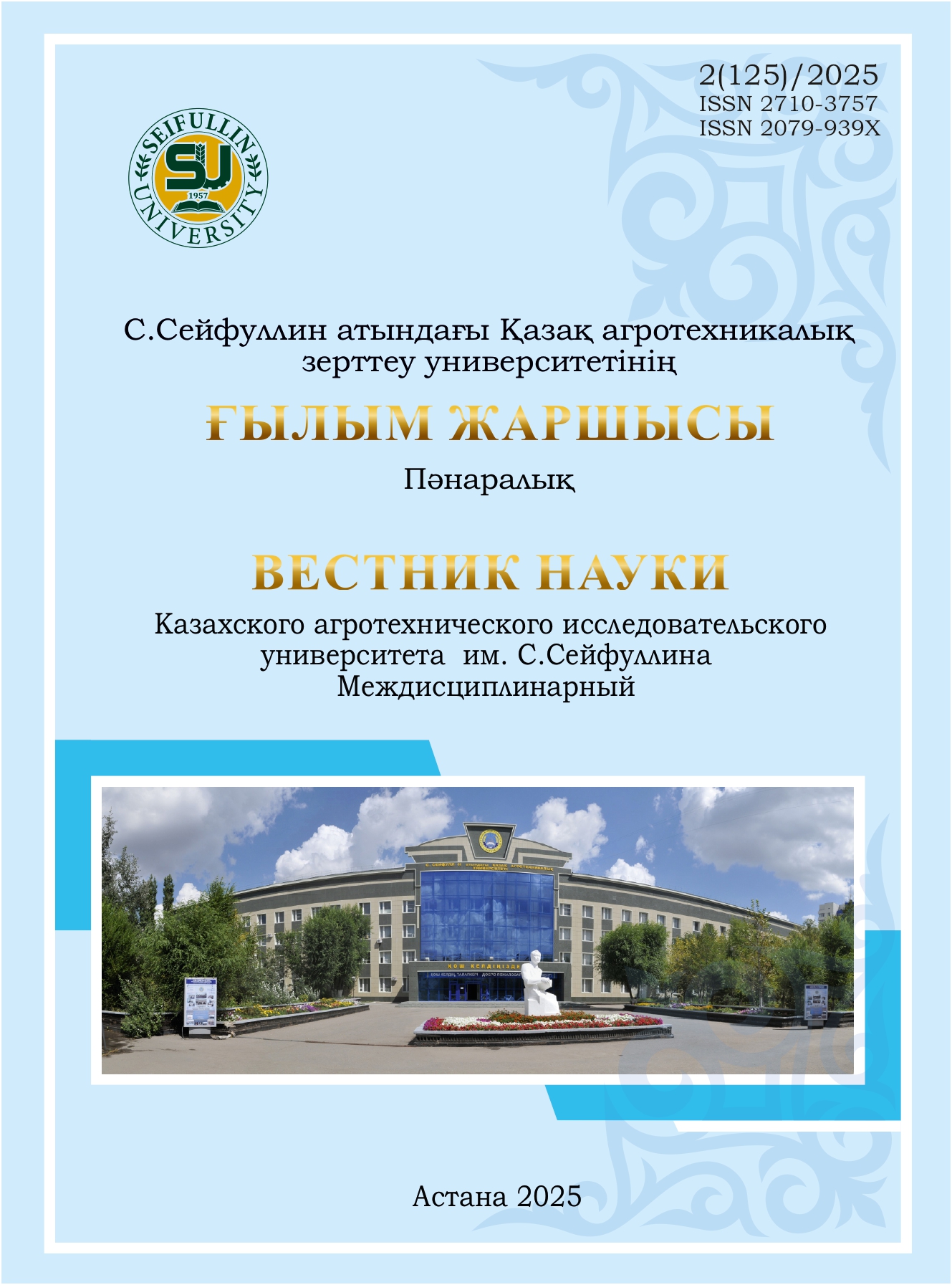Results of the Evaluation of Soybean Varieties of Different Origins in the Conditions of Northern Kazakhstan
DOI:
https://doi.org/10.51452/kazatu.2025.2(125).1840Keywords:
soybean; growing season; photosynthetic activity; agronomically valuable traits; yield.Abstract
Background and Aim. Northern Kazakhstan is characterized by challenging agro-climatic conditions that impact soybean productivity. Studying the genetic traits and adaptability of soybean varieties from various origins is essential for improving yields. This study aimed to perform a comprehensive evaluation of soybean varieties based on key agronomic traits to identify promising candidates for breeding.
Materials and Methods. The research was carried out at the breeding station of the A. I. Barayev Scientific Research Institute of Grain Farming LLP (A.I. Baraev SPCGF). Soybean varieties of Russian, Kazakhstani, and Chinese origin were evaluated. Data were collected using standard methodologies, and analysis of variance was performed using Statistica 10 software. Differences were considered statistically significant at P ≤ 0.05.
Results. Yields ranged from 2.5 to 16.4 c/ha, depending on the maturity group. Weather conditions extended the developmental phases, thereby lengthening the growing season. A strong positive correlation was found between the growing season length and yield structure elements (r = 0.64–0.97), while the correlation between growing season length and actual yield was weakly negative (r = -0.27). The coefficient of variation (CV) for yield was 21.18% for early maturing varieties and 5.51% for medium-early varieties.
Conclusion. The study demonstrated that soybean productivity varied significantly based on their genetic characteristics and environmental conditions. In 2024, high yields were primarily associated with yield structure elements, as confirmed by strong correlations. Several promising early- and mediumearly maturing varieties were identified as suitable candidates for breeding high-yield soybean cultivars in Northern Kazakhstan.

